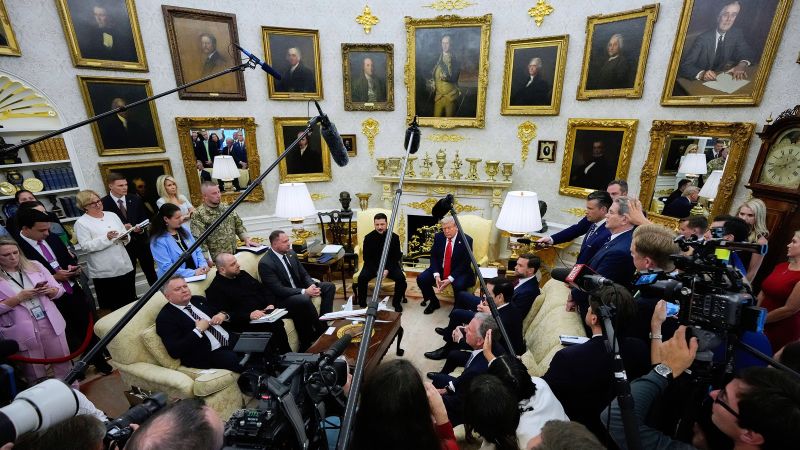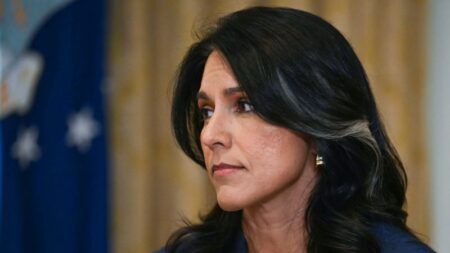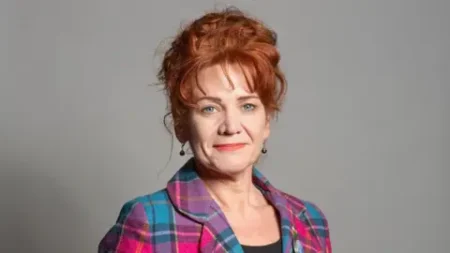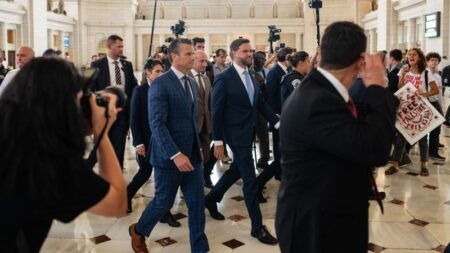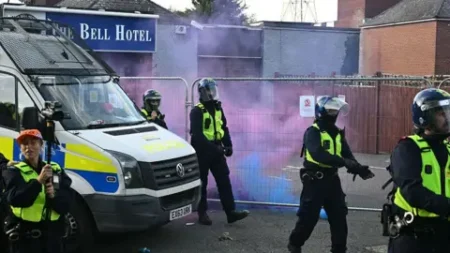On Monday, President Donald Trump engaged in rapid-fire discussions with Ukraine’s President Volodymyr Zelensky alongside various European leaders, a move that many diplomats considered unusual in the context of presidential diplomacy. This non-typical gathering at the White House underscored the urgency of the situation regarding the ongoing conflict in Ukraine and the emphasis on negotiating an end to Russia’s aggression.
The immediate decision of multiple high-profile leaders to alter their schedules and convene in Washington emanated from a sense of necessity to align themselves with Trump regarding the war’s resolution. European officials expressed that they were also motivated by the desire to ensure that their influence would not be diminished during how the peace negotiations unfolded. CNN’s sources pointed out that such spontaneous meetings of this scale have been rare, making this gathering a significant event in international politics.
A key point of discussion during the talks was the United States’ commitment to providing security assurances for Ukraine. Zelensky and the European leaders were eager to ascertain exactly what resources Trump was prepared to deploy post-agreement to dissuade potential Russian aggression in the future. Within the Oval Office, Trump notably did not dismiss the possibility of deploying U.S. troops to Ukraine as part of peacekeeping efforts, representing a shift in strategy that could facilitate Zelensky’s acceptance of various components of a peace deal.
Amidst the dialogues, Trump emphasized the importance of discussing roles and responsibilities with European counterparts. He highlighted that Russian President Vladimir Putin seemed amenable to granting Ukraine security guarantees, a notion that was quickly positioned as a pivotal consideration for the negotiations. Trump conveyed optimism about achieving a collective agreement that would deter any future actions against Ukraine, illustrating a shift in perspective that could spark renewed interest in peace talks.
Interestingly, while Trump remained noncommittal in his statements, his acknowledgment of a potential U.S. troop presence in Ukraine reflected a marked change from his earlier stance on military involvement overseas, where he campaigned on reducing American footprints in foreign conflicts. This willingness to entertain a more robust U.S. security role could indicate a newfound strategy aimed at culminating in an end to the protracted conflict.
At the same time, Trump’s retraction of the immediate need for a ceasefire took many European leaders by surprise. Just prior to his summit with Putin, he had voiced expectations for a ceasefire agreement and noted possible “severe” repercussions should it fail. However, following his discussions in Alaska, he altered this viewpoint, expressing interest in prioritizing a conclusive peace arrangement over the ceasefire itself.
During the current meetings with European leaders, Trump made it evident that, despite desires for a ceasefire, the realistic conditions at present did not support such a conclusion. German Chancellor Friedrich Merz attempted to persuade him to reconsider, noting that a forthcoming assembly would largely require a ceasefire. Trump, however, appeared indifferent, maintaining that while a ceasefire could be beneficial, it was not a stringent condition for proceeding.
The acute objective behind convening Trump, Zelensky, and Putin was clear: to establish a triangular negotiation that could pave the way for an eventual cessation of hostilities. Trump appeared confident that such a face-to-face meeting was more a question of timing than possibility, though Putin’s reluctance to engage remained a roadblock.
French President Emmanuel Macron suggested enhancing discussions by considering the involvement of a European leader in subsequent meetings, stressing that the broader European security landscape needed to be a part of the security guarantees. However, this proposal may not resonate with Trump, who seemed focused on solidifying an agreement primarily between the involved parties of Ukraine and Russia.
Inside the Oval Office, the ambiance during Zelensky’s visit presented a vastly improved rapport compared to previous interactions. Notably, Zelensky committed significant effort into ensuring that conversations remained constructive and effective, even going as far as to express gratitude at the outset of his remarks and appearing in formal attire to avoid any previous misinterpretations of his intentions.
The discussions culminated in a setting that, despite past turbulence, suggested a move towards a more cooperative spirit, reflecting on the high stakes of not just Ukraine but of European stability as a whole in the context of the ongoing negotiations.






